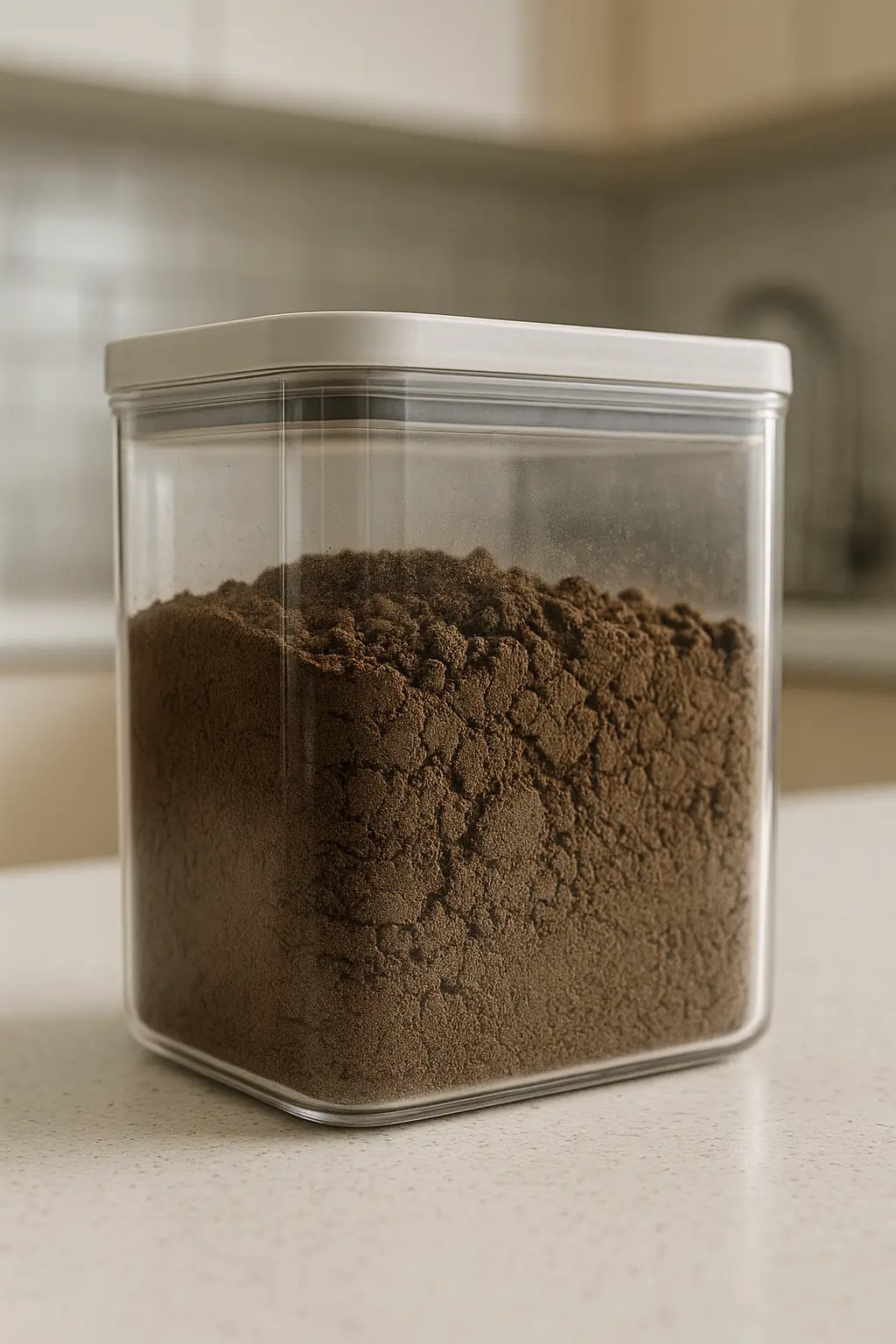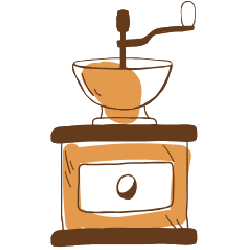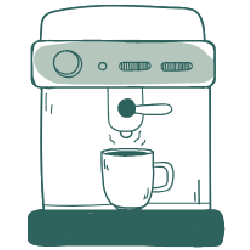Have you ever wondered when does coffee go bad? You want that amazing flavor in every cup, right? That means preserving the delicate qualities of the bean, from its origin as a vibrant coffee cherry all the way to your brew. Keeping your coffee fresh ensures you get the best taste experience.
When we talk about optimal coffee quality, we mean its peak flavor, aroma, and overall sensory profile. This naturally fades over time. Certain environmental factors speed up this decline – think of them as coffee’s main enemies.
I’ll show you how to spot the signs of bad coffee, explain the exact shelf life of coffee by type, discuss any potential health risks of old coffee, and give you practical coffee storage tips. You’ll know how to keep your Whole Bean Coffee, Ground Coffee, Brewed Coffee, and Instant Coffee at its very best.
How can you recognize the signs when your coffee has gone bad?
You can usually tell if your coffee has gone bad by checking its appearance, smell, and taste. These signs of bad coffee vary a bit depending on whether you have whole beans, ground coffee, or brewed coffee, but they all signal a loss of coffee freshness, or even outright spoilage.
Knowing these signs helps you avoid a disappointing brew. You’ll always enjoy your coffee at its peak. Let me walk you through the specific indicators for each form of coffee.
How can you tell if whole coffee beans have gone bad?
Whole coffee beans show spoilage or quality loss mainly through a weaker scent and a changed look. Fresh beans have a rich, vibrant aroma, but this disappears as they age.
A noticeable aroma loss is your first clue that your whole bean coffee is past its prime. Also, look for any discoloration. Fresh beans often have a somewhat shiny surface (especially dark roasts), but this can become dull, tarnished, or faded.
While some oiliness is normal, particularly in darker roasts, excessive oiliness or a greasy feel can point to old or improperly stored beans. This often happens because the coffee oils have oxidized quickly.
What are the signs that ground coffee has gone bad?
Ground coffee degrades much faster than whole beans because of its increased surface area. The clearest signs of spoilage involve changes in its aroma and taste.
A stale or faded aroma is a sure indicator. Fresh grounds release a rich, potent smell. Old coffee, however, will smell dull or have no scent at all. You might even notice a sour or musty odor – a big red flag for moisture damage or even potential mold growth.
When you brew bad ground coffee, it will have a flat, bitter taste. It loses the complex flavors, brightness, and vibrancy you expect from fresh coffee. You’ll get a dominant stale taste, or sometimes an overly bitter taste.
How do you know if brewed coffee has gone bad?
Brewed coffee has the shortest shelf life and quickly shows signs of spoilage. Its main indicators are noticeable changes in flavor and odor.
You’ll probably experience a flat or bland taste, as the coffee loses its expected depth and nuanced flavors shortly after brewing. The coffee develops unusual odors like musty, sour, or even rancid smells. These are very different from its original fragrant aroma.
An unpleasant aftertaste – perhaps bitter, acrid, or simply undesirable – also tells you your brewed coffee has lost its quality and is likely spoiled.
What is the shelf life of coffee by form and storage?
The shelf life of coffee varies significantly based on its form and how you store it. Coffee generally remains safe to consume for a good while, but its coffee freshness – that optimal flavor and aroma – disappears much quicker.
Understanding these timeframes helps you enjoy your coffee at its best and avoid wasting it. Here’s a quick summary showing the typical shelf life for different coffee types under ideal and less ideal conditions.
| Coffee Form | Under Ideal Storage (Peak Freshness) | Under Ideal Storage (Safe to Consume) | Less Ideal Storage Decline |
|---|---|---|---|
| Whole Bean (Roasted) | 2–4 weeks (unopened), 2–3 weeks (opened) | 6–12 months (unopened), 6–8 weeks (opened) | Quality drops rapidly; stale after a few weeks if exposed to air/light/moisture/heat |
| Ground Coffee | 1–2 weeks (unopened), 3–7 days (opened) | 3–5 months (unopened), 1–2 weeks (opened) | Loses freshness in days; stale, oxidized, or off-flavors quickly |
| Instant Coffee | N/A (Designed for longer preservation) | 1–20 years (unopened), several months to 2 years (opened) | Can clump and lose flavor if exposed to humidity |
| Brewed Coffee | Immediate consumption is best | A few hours (room temp), 12–24 hours (refrigerated) | Flavor deteriorates within hours; can become bitter, flat, or sour |
What is the whole bean coffee shelf life?
Whole bean coffee keeps its peak freshness for a relatively short time after roasting. An unopened bag usually holds its optimal flavor for 2–4 weeks.
Once you open the bag, the beans retain their peak flavor for about 2–3 weeks, assuming you store them correctly. However, whole beans remain safe to consume for much longer – often up to 6–12 months when unopened, and 6–8 weeks after opening. Just know their flavor will have faded significantly by then.
Proper storage in an airtight container makes a huge difference in protecting those delicate flavors.
How long is the ground coffee shelf life?
The shelf life of ground coffee is considerably shorter than whole beans because of its increased surface area. Unopened packages keep their peak freshness for about 1–2 weeks.
Once opened, ground coffee quickly loses its vibrant flavor, staying at peak freshness for only 3–7 days. While still safe to consume, ground coffee can last for 3–5 months unopened and 1–2 weeks after opening.
The increased surface area of the grounds speeds up oxidation and flavor degradation, so drinking it quickly is essential for the best taste.
What is the instant coffee shelf life?
Instant coffee boasts a much longer shelf life compared to other coffee forms. An unopened jar or packet can stay good for 1–20 years, thanks to its dehydrated state.
After opening, instant coffee can still last for several months to two years, provided you keep it dry and sealed. Its extended longevity makes it a convenient choice for infrequent coffee drinkers or for emergency supplies.
Even instant coffee will lose some flavor intensity over many years, though it usually remains safe to drink.
What is the brewed coffee shelf life?
Brewed coffee has the shortest shelf life and tastes best right after you make it. Its peak freshness lasts only minutes to a few hours.
At room temperature, black brewed coffee is generally safe to consume for a few hours, but its flavor rapidly gets worse. If you refrigerate it, brewed coffee can safely last for 12–24 hours.
Even with refrigeration, the flavor deteriorates quickly. It will likely taste flat or sour after just a few hours.
What makes coffee go bad?
Several primary environmental factors actively degrade coffee freshness, leading to spoilage and flavor loss. These factors kick off chemical and physical changes within the coffee, breaking down its delicate compounds.
The main enemies of freshness are air, light, moisture, and temperature. Each contributes uniquely to why coffee goes bad, diminishing its aroma and taste over time through processes like oxidation.
How does air (oxygen exposure) make coffee go bad?
Air exposure – specifically to oxygen – is a major culprit in making coffee go bad. Oxygen causes oxidation of the delicate coffee oils and volatile aromatics present in the beans.
This chemical reaction breaks down flavor compounds, leading to a noticeable stale taste, dull flavors, and eventual rancidity. Freshly roasted coffee naturally releases carbon dioxide, which acts as a temporary protective barrier against oxygen. But this protection eventually fades.
Minimizing air exposure through proper storage is crucial to preserve coffee quality.
What impact does light (UV rays) have on coffee freshness?
Light exposure, particularly from ultraviolet (UV) rays, significantly impacts coffee quality and freshness. UV rays have enough energy to break down the sensitive aromatic and flavor molecules in coffee.
This degradation results in noticeable flavor dulling and a rapid loss of overall quality. You must store coffee in opaque containers to shield it from any direct light exposure.
Storing coffee in transparent containers, even in a seemingly dark room, can still allow ambient light to cause damage over time.
How does moisture (humidity) cause coffee to go bad?
Moisture exposure severely damages coffee, making it go bad more quickly. Coffee is naturally hygroscopic – that means it readily absorbs moisture from the surrounding humid air.
This absorbed moisture triggers chemical degradation of coffee compounds, leading to undesirable off-flavors. Even worse, excess moisture can encourage rapid mold growth, which poses potential health risks.
You must store coffee in a completely dry environment to maintain its quality and prevent spoilage.
How do temperature (heat & fluctuations) affect when coffee goes bad?
Elevated temperatures speed up the process of staling, causing coffee to go bad faster. High heat breaks down the sensitive coffee oils and volatile compounds that give coffee its rich flavor and aroma.
Plus, temperature fluctuations are especially damaging. They cause condensation inside storage containers, which introduces moisture directly to the coffee. This moisture then further promotes chemical degradation and potential mold growth.
You should store coffee in a cool and stable environment, ideally between 15–24°C (59–75°F), away from heat sources like ovens or direct sunlight.
Are there health risks to drinking old coffee?
While drinking old coffee mainly just tastes bad, there can be some minor health risks of old coffee. These range from mild digestive discomfort to more serious concerns if significant spoilage, like mold, is present. Most of the time, old coffee simply tastes terrible rather than posing a severe danger.
Understanding these potential risks helps you decide when to throw out old coffee. You generally differentiate between coffee that has simply lost its flavor and coffee that has become truly harmful due to contamination.
What are the flavor and digestive discomfort risks of old coffee?
Old coffee mostly affects its flavor and aroma, leaving it stale, bitter, and flat. This degradation really reduces how much you enjoy your brew.
Drinking such coffee can sometimes increase its acidity, potentially causing mild digestive issues like heartburn, stomach pain, or bloating for sensitive individuals. Very old coffee with rancid oils, which come from extensive oxidation, might cause slight stomach irritation. However, it typically won’t lead to severe food poisoning.
The main complaint you’ll have is the unpleasant taste, not significant physical harm.
When does mold & bacteria in coffee become dangerous?
Coffee left out for too long, especially if it contains milk or cream, can pose more serious health implications due to mold growth and bacteria. Mold produces harmful substances called mycotoxins, which can be detrimental to your health if ingested.
Black coffee left out at room temperature for more than about 12 hours, particularly in humid conditions, has an increased risk of microbial growth. Coffee prepared with milk or cream becomes unsafe after just 2 hours at room temperature. These additives create an ideal breeding ground for rapid bacterial proliferation.
Always inspect coffee for visible mold or unusual smells before consuming, especially if you’re unsure about how long it’s been stored.
What is the optimal coffee storage for keeping your brew at its best?
Optimal coffee storage tips are crucial for maximizing coffee freshness and extending its shelf life. By following these guidelines, you can protect your coffee from its four main enemies: air, light, moisture, and temperature.
Effective storage means using general best practices for all coffee types, plus specific advice tailored for whole beans, ground coffee, and instant coffee. It also involves understanding when and how to properly refrigerate or freeze your coffee.
What are the core principles for maximizing coffee freshness?
To maximize coffee freshness, you need to stick to a few core storage principles:
- Always use airtight, opaque containers to protect your coffee from oxygen and light exposure.
- Store your coffee in a cool, dark, dry place, away from direct heat, sunlight, high humidity, and strong odors. This environment prevents volatile compounds from degrading quickly.
- Choose non-reactive materials like stainless steel, ceramic, or opaque glass for your containers. This avoids any flavor alteration.
What are the best coffee storage tips by coffee type?
Different coffee forms need specific storage approaches to keep their quality high:
- For whole bean coffee, it’s best to buy smaller batches and grind just before use to preserve peak flavor. Use containers with one-way valves if you can.
- Ground coffee should be stored similarly to whole beans in an airtight container. However, you must consume it much faster because it loses flavor rapidly. Vacuum sealing can help if you buy in bulk.
- For instant coffee, make sure its container is always airtight and protected from humidity. This prevents clumping and maintains its texture.
Proper storage really extends the enjoyable life of each coffee type.
Should you refrigerate coffee, or is it not recommended?
Refrigeration is generally discouraged for everyday coffee storage. It might seem like a good idea, but the refrigerator environment creates problems for coffee.
Coffee is highly susceptible to moisture and odor absorption. This means it will readily pick up moisture and smells from other foods, which degrades its flavor. Furthermore, frequently opening and closing the refrigerator door causes significant temperature fluctuations. This can lead to condensation inside the coffee container, introducing moisture and accelerating spoilage.
Proper pantry storage actually preserves flavor more effectively than refrigeration for regular use.
When is freezing recommended for long-term coffee storage?
Freezing can be an effective method for long-term coffee storage, allowing coffee to last for several months. However, this strategy only works if you vacuum-seal the coffee beans in small, individual portions.
Proper sealing is essential to prevent freezer burn and protect the beans from moisture getting in. Crucially, you should thaw frozen coffee only once. This prevents repeated condensation and subsequent flavor degradation.
Freezing ground coffee is generally less effective than freezing whole beans. Ground coffee has a larger surface area, which makes it more prone to moisture and flavor loss.
When does coffee go bad?
Knowing when coffee goes bad comes down to understanding the visible signs, its varied shelf life, and the critical storage practices that keep its quality high. We’ve looked at how to identify bad coffee through changes in aroma, appearance, and taste, depending on whether it’s whole bean, ground, or brewed.
We detailed the specific shelf life of coffee for each form, emphasizing that peak flavor lasts much shorter than the period it remains safe to consume. We also examined the “enemies of freshness”—air, light, moisture, and temperature—that speed up degradation.
Finally, I gave you actionable coffee storage tips, stressing the importance of airtight, opaque containers in a cool, dark, dry place. We also clarified the roles of refrigeration and freezing. By using these guidelines, you’ll ensure every cup you brew delivers the rich, delightful experience you expect from fresh coffee. Try out these tips to find what works best for your coffee habits.









